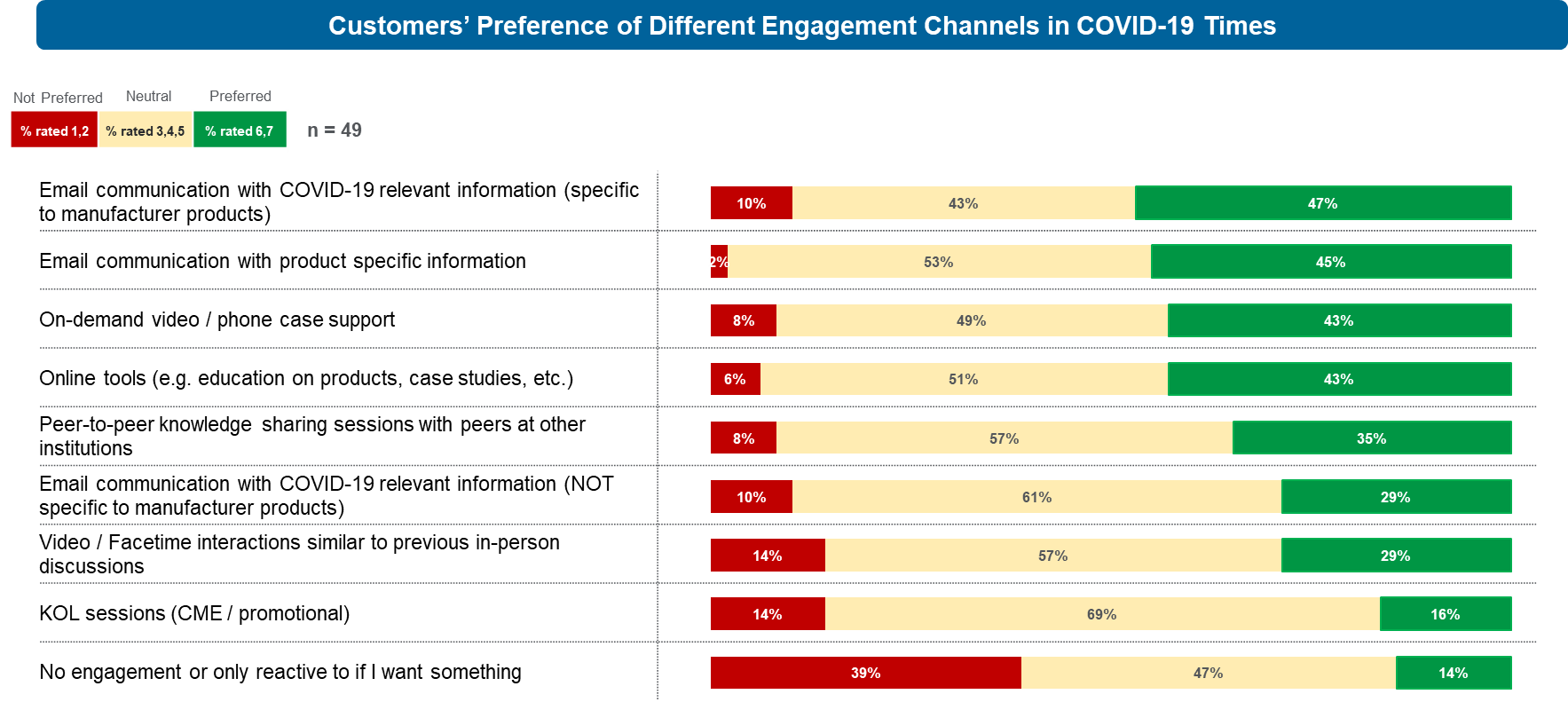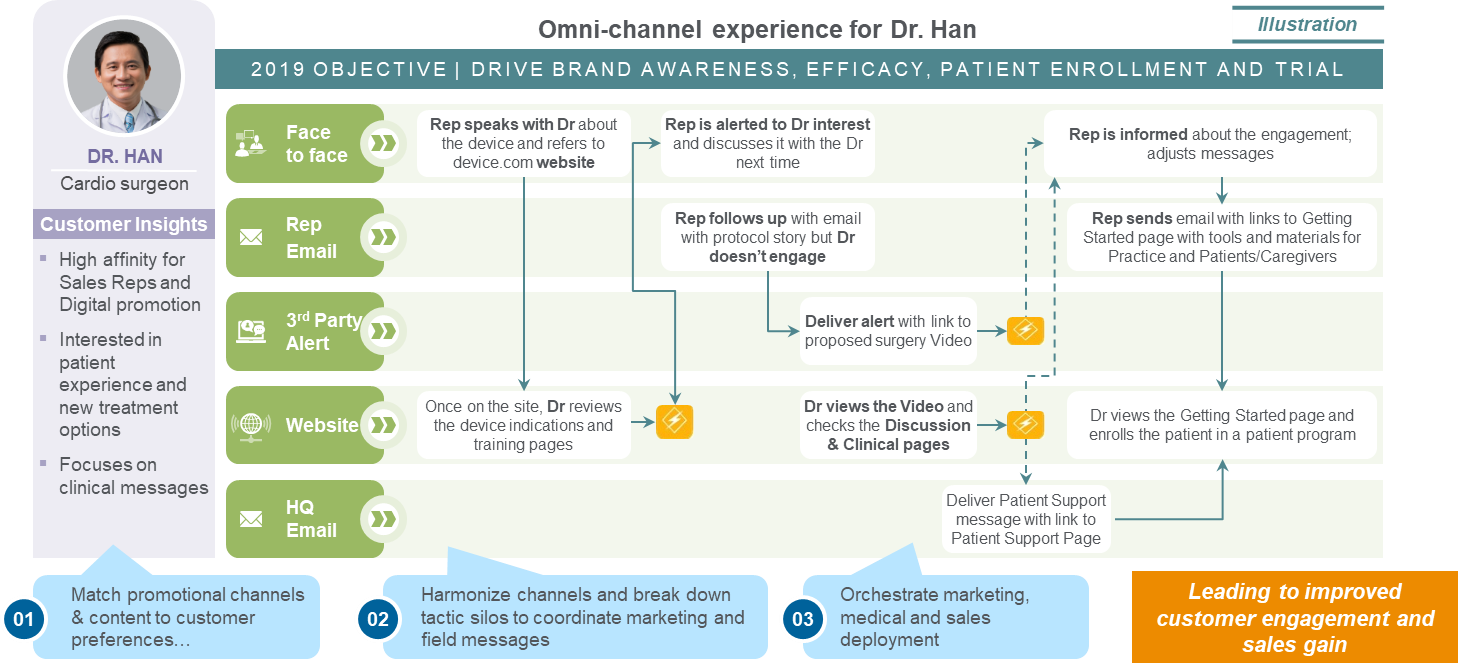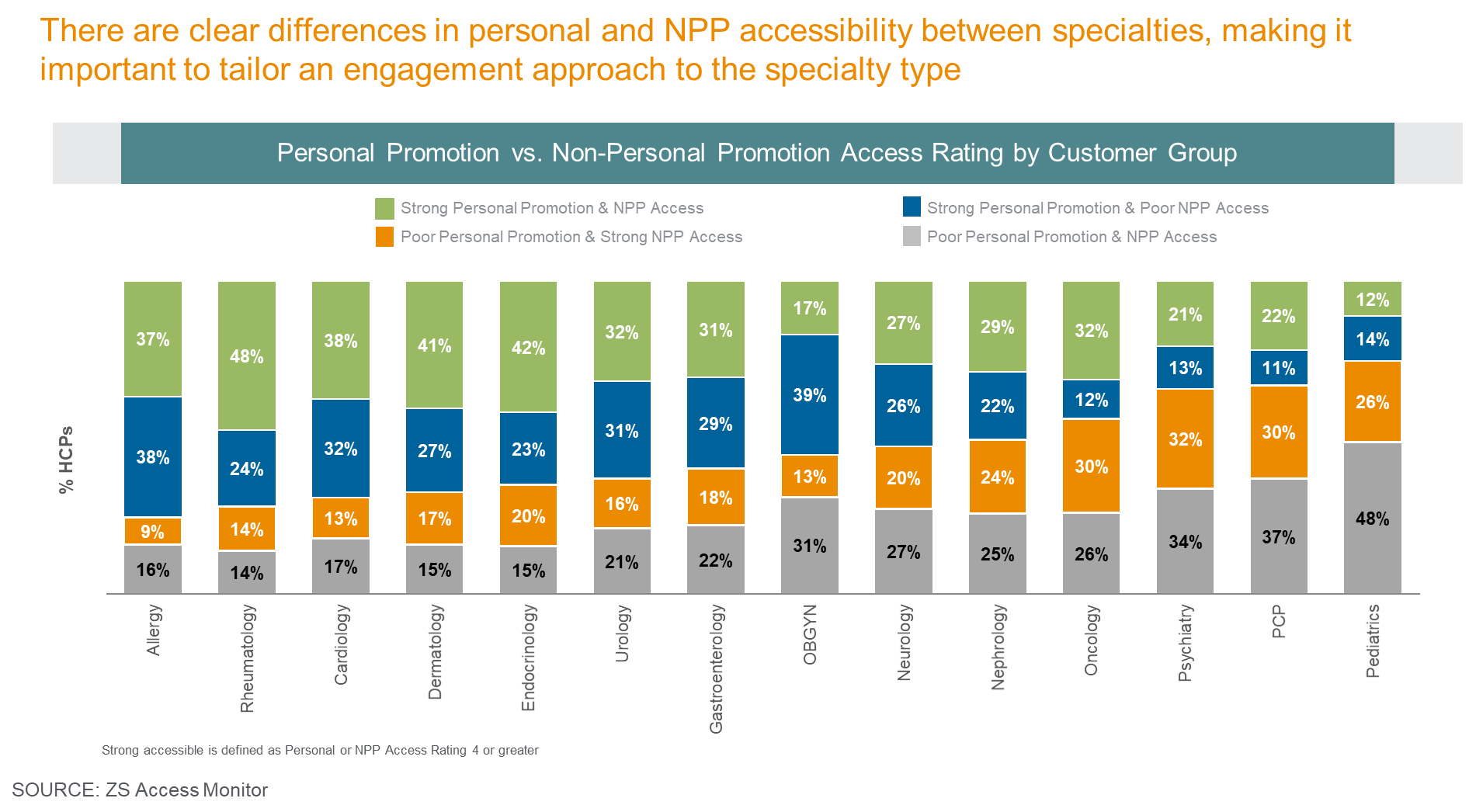Post-COVID, is it time for medtech to stop relying on a single sales channel? (ZS Insights)

Sales and marketing have changed a lot over the last 10 years. Most industries, from the technologically advanced to the most basic, have introduced a variety of sales and marketing channels, from telesales and emails to ads, videos and social. Even in healthcare – one of the most constrained and conservative industries – pharma manufacturers, providers of all sizes and insurers have been gradually introducing and perfecting the art and science of multi-channel sales and marketing for many years. Many are so sophisticated and comprehensive by now, they call it “omni-channel engagement.”
And yet most of the medtech industry has barely started this journey. It has had a single, rep-based go- to-market strategy for so long, and there was no urgency to try something else. And then COVID-19 hit, and the whole sales relationship was pulled from under medtech’s feet. Not only have hospitals restricted physical access, but customers, from doctors to hospital administrators, have realized that digital means of getting information are much more effective. Additionally, the whole premise of the rep-doctor relationship, with the rep just helping the doctor with clinical product info, is no longer enough. Doctors are trying to figure out how to care for struggling patients under stressful and risky situations, and rather than product help, they need help with developing new COVID risk-lowering protocols and financing. So sales reps, many of them not medically trained and not empowered today to offer any additional help, find themselves in need of programs, webinars and new protocols developed by the companies they work for and provided via variety of digital, on-demand channels.
One may think that the pandemic will come and go, yet ZS’s COVID-19 survey showed that 43 to 47% of providers strongly prefer email communication, on-demand video and online tools to personal conversation, and that two-thirds of them believe that this preference will continue after COVID-19.

Said in another way, a medtech company that doesn’t master at least these basic channels is at risk of missing an opportunity with about half of their customers. Those that offer all of these ways to engage with their customers in a 24/7 way can handily win, even in competitive and differentiated markets.
Moreover, it’s not all about access. Variety and on-demand pull are important too. A new potential customer may not be immediately impressed by a direct sales pitch, but many if not all respond well to a balanced and tailored mix of various tactics.

We’ve seen a new-to-product sales lift as high as 4 to 8% through a customer-centered omni-channel program.
That’s why companies that have invested in multi-channel programs not only have an easier time adapting to COVID-19, but will be more successful in the long term.
So what are the right steps for jumpstarting your omni-channel capability?
- Understand how customers want to engage with you. Through market research, evaluate the potential of the 10-12 most common channels and understand which content lends itself to which channel. Consider all types of content: marketing, educational and case support, as well as financial and practice management help. Understand different cohorts of customers. While the older ones may still prefer face-to-face interactions, or at least a call or Zoom meeting with reps, younger doctors more and more want to get their information completely digitally, on demand, when it’s convenient for them. Specialty and place of practice may also dictate preferences: our research on access and preference for personal vs. non-personal channels shows that some specialists were already much more accessible via non-personal promotion, even before COVID-19.

- Pull the customer data together. As scary as it sounds to veterans of data battles, there’s now a good selection of third-party data providers, from Definitive Health, Symphony Health and AHA, that can provide data on institutions, to Acxiom and others that can provide data on doctors and patients as consumers. Although tying sales and all the different data points across an organization is helpful, it’s not necessary to completely clean and match all the data before starting a digital program. A comprehensive list of all the customers from a third party could be a good enough start.
- Organize the content. While you may have lots of content developed, new channels such as emails, webinars and training videos may need new content, or old content reorganized for better consumption. Matching customers to content is a first step. Then, monitor customer preferences to understand not only what content each customer wants to use, but also at what frequency and in which form, and even preferred visuals. In our analytic work with multichannel marketing organizations, we found that some customers may respond better to text, while others to infographics. Some prefer images of people, while others respond better to images of the product or abstract pictures. Personalizing the message can improve responses significantly.
- Develop omni-channel marketing analytics and orchestration tools. Developing a few webinars and email templates sounds easy enough, and there are many marketing platforms, such as SFDC Marketing Cloud or Adobe, that can make deployment easy. But there’s nothing more annoying for a customer than being bombarded by the same messages too often, or through non-preferred channels. In response, customers may disengage completely. A good orchestration system allows you to constantly monitor customer engagement with different channels and content and develop “best next action” sequences, suggesting or even directly executing the right activity with the right customer in the form and channel that the customer can best engage with, and help sales reps orchestrate the complete multichannel customer engagement, while at the same time staying closely connected and relevant, even as the dynamics of the situation change for the customer. While this may sound intimidating as it often requires AI/ML capabilities, platforms like these can be easily acquired and configured in just a few months.
- Expand the scope of the sales rep role to an orchestrator. The role of the sales rep should transform from a single point of contact to an orchestrator of the customer journey through many channels and events. Such “hybrid reps” would play a more active role in non-personal content development, helping to optimize and personalize machine-driven content for their customers. They would also coordinate messaging campaigns across the organization and represent their whole organization and all of its offerings, from clinical to financial, to patient education and practice management. Understandably these skills won’t appear magically, but will require training and perhaps even different people with sharper digital and organizational expertise.
Most importantly, don’t wait any longer. Omni-channel sales and marketing is no longer a luxury. It’s a fundamental capability without which no company can be in business. A majority of customers now expect to engage digitally when it’s convenient for them, and the sales lift and therapy adoption from improved engagement is dramatic. It may be a three to five-year journey to master all of the channels and full orchestration, but in three to six months, perhaps before the active phase of COVID-19 ends, you can enable a few key channels and services, and help your sales reps to fully engage with your customers in this uncertain and fluid time.
Get a free consultation on how to create your Omni-channel


